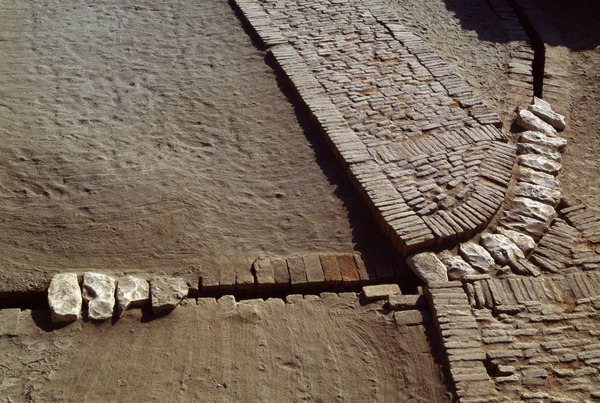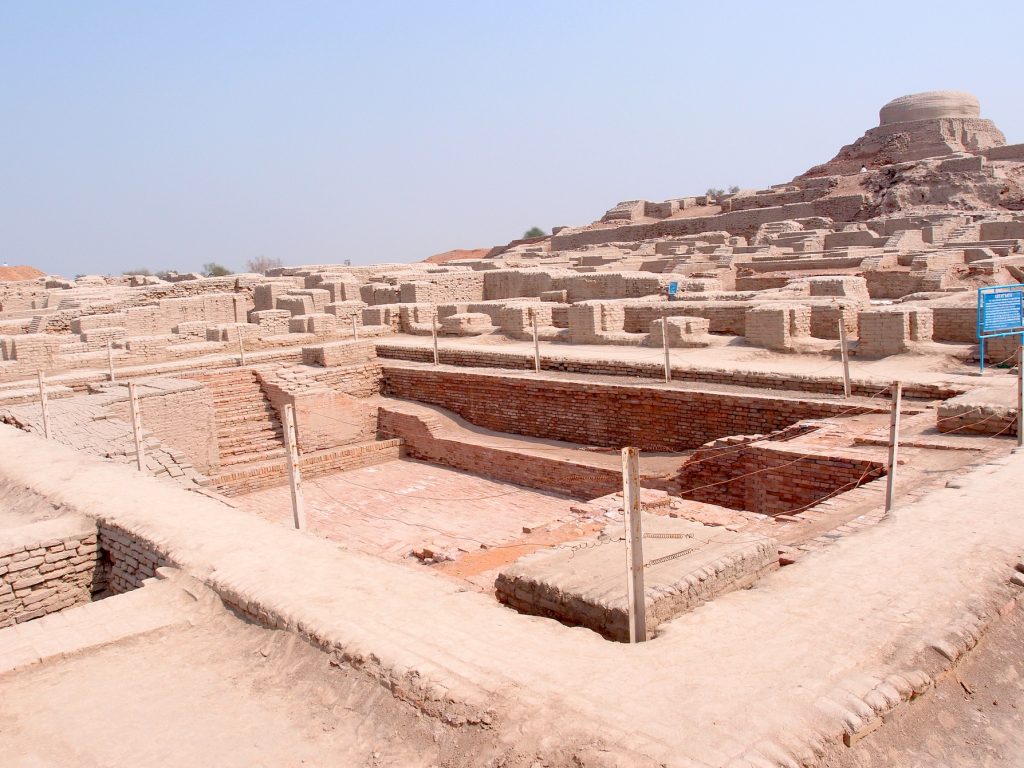Indus Valley Civilization
3300 BCE – 1300 BCE
The Indus Valley Civilization, also known as the Harrapan Civilization, is thought to possibly have brought the origin of Hinduism and is believed to be one of the most peaceful civilizations to have existed. It extended from what we know today as northeast Afghanistan to Pakistan, and northwest India.
Architecture/Urban Planning
World’s First Major Urban Centres
Mohenjo-daro and Harrapa were the two largest cities of the Indus Valley. Not only that, they are now thought to be two of the world’s first major urban centres. Both cities showed incredible signs of advanced architecture and urban planning.
The street planning of these cities was elaborate. It was gridded and orientated to the points of the compass. Towns were sophisticatedly divided into wards according to their function (shops, workshops, residences). All buildings were built with uniformly-sized baked bricks through both these major cities which is an obvious indication that their civilization was widely organized. They found public wells at street intersections and they found private wells inside the courtyards of two-storey residences. Most importantly, they had an urban sanitation system which consisted of covered sewers and a drainage system leading water out of the city. All these elements of urban planning suggest that the Indus Valley civilization had an efficient city governments who priority placed on hygiene. Mohenjo-daro also features an impressive public bath and social gathering site known as the Great Bath.
Surrounding the cities were massive perimeter walls constructed of mud brick and sometimes additionally faced with fired brick or stone. These perimeter walls were most likely built to protect against floods, but they also could have helped deterred military conflicts. Surprisingly, there are no other obvious signs of fortification within these large cities, which was very uncommon for the times. There is also no evidence that these walls have been damaged by warfare in any way over its lifetime.


Science and Tools
Consistency is key
The Indus civilization are believed to be among the first to develop a set of standardized weights and measures. Archaeologists have discovered a highly standardized system of stone weights was used throughout the entire area of the Indus civilization that is thought to have been based off of the weights of grains, such as wheat, barley, and edible seeds. These weights were used with matched scale
pans, which were made of copper or bronze and occasionally of terracotta and were used broadly. Indus weights, along with seals and sealings, have been found in the Arabian Gulf to as far away as Mesopotamia, and Central Asia which goes to show just how effective and widespread its use was.

References
Robinson, Andrew. “Forgotten Utopia.” New Scientist, vol. 231, no. 3091, Sept. 2016, pp. 30–33. EBSCOhost, doi:10.1016/S0262-4079(16)31702-X.
Upshur, Jiu-Hwa Lo. “Mohenjo-Daro.” World History: A Comprehensive Reference Set, edited by Facts on File, Facts On File, 1st edition, 2016. Credo Reference, https://ezproxy.capilanou.ca/login?url=https://search.credoreference.com/content/entry/fofworld/mohenjo_daro/0?institutionId=6884. Accessed 29 Sep. 2020.
Kenoyer, Jonathan Mark. “Indus Civilization.” Encyclopedia of Archaeology, edited by Deborah M. Pearsall, Elsevier Science & Technology, 1st edition, 2008. Credo Reference, https://ezproxy.capilanou.ca/login?url=https://search.credoreference.com/content/entry/estarch/indus_civilization/0?institutionId=6884. Accessed 29 Sep. 2020.






